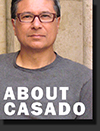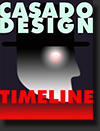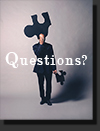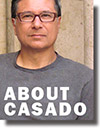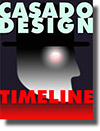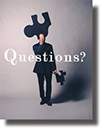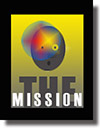An Homage to Jean-Michel Basquiat
OK! What do you feed it?
Answer: Life.
This is the last of my Brain Trilogy. In Part One I described the Brain and in Part Two I talked about Focus – how to communicate with your brain. This last Part, I like to call Life. It’s about you adding a visual lifestyle, in the same way you decide to eat healthy or exercise. And like any lifestyle change, for most of us, it doesn’t happen overnight. Sure- there are people who are born with it and totally dedicate their lives to a visual lifestyle.
Jean-Michel Basquiat is one of my personal inspirational favorites. Here are a couple of his quotes:
“I don’t listen to what art critics say. I don’t know anybody who needs a critic to find out what art is”
“I start a picture and I finish it. I don’t think about art while I work. I try to think about life.”
Basquiat was a self-taught artist. He quit high school in the eleventh grade and went on the streets of New York to sell sweatshirts and postcards and then became a graffiti artist under the name “SAMO”. He became a successful artist and became friends with Andy Warhol. He died of a drug overdose in 1988 at the age of 27. How sad. He once said that he was driven 80% of the time by anger. This was very curious to me. That anger could generate such stimulating and at the same time, approachable art.
The lesson here is that there are no limits to creativity and it comes in a myriad of forms. All of you can have your own original form of creativity and it all depends on what you feed your brain to develop it. Your form of creativity will define you, along with your own personal thought process.
The clue is “…Try to think about life.”
Life is what you feed your brain continuously. Life consists of all your experiences- education, travel, culture, history, art that you love and art that you don’t. Examine all those experiences more closely. It’s like reading “between the lines” in a conversation- a set of words that trigger a deeper meaning than what’s being expressed. You hear a song that reminds you of your past. You smell something that you can’t identify; yet it stays with you until you figure it out.
Your eyes should be one of your biggest sources of food.
Start looking at things that you would normally skip in your day-to-day life. Watch the traffic signal in a dense fog, consider what a person is wearing that is out of character, watch the clouds overhead and how they pass between buildings and change. Look at the color on the walls in a public restroom: Is the graffiti done by someone who you can describe?
Simply put, just about everything you witness is available for close examination.
This visual exercise will eventually happen quickly for you as you progress, and like needles in a haystack, your process should be focused to find the gems that are full of curiosity and uniqueness. Those elusive gems will stick in your brain for future reference once you find them and that’s what it’s all about. The reference files in your brain should be bursting at the seams. It’s this source that will come alive and generate interesting relationships and connections that will spark and create a fire of ideas.
Because a lot of my projects require visual ideas, I need to capture images as reference. I love my iPhone but I still carry a small camera with me everywhere I go. I am getting better at not taking pictures of absolutely everything, but I still come home each day with a bunch. I will download them and not look at them again for about a month. This way the excitement of the moment or the process doesn’t taint my judgment as to whether or not a particular image is worth keeping. If I wait, I can see it with fresh eyes to determine its relevance. So just as I have a brain full of visual references, I also have a computer full of photographic images for inspiration. Sometime I even delete them as I scan them years later because I’ve moved on.
You will find your own methodology of gathering food for your brain. I have found going to any type of related art event will generate visuals worth keeping. Stealing other people’s ideas is another source- you will eventually have your opinion how to improve or change them, or how use a fragment or two. When I go to a museum, I go to every floor, and even if I don’t have the time to study each exhibit, I at least capture a glimpse of it. In my past, I had friends who used drugs to make themselves more visually sensitive but in the morning they couldn’t remember a thing!
The idea behind all of this curiosity is setting up your brain to have the right stuff to cross-reference once you ask it a question. The more you feed it, the more you can relax knowing it will have something to say. Another technique I use is a sort of visual association game. For example, I once saw these black light fixtures on a ceiling and the words “black licorice” come out of my mouth instantly. All of these are useful exercises so when you reach for an idea, your brain doesn’t hesitate. It may not be the idea or thought you’re looking for, but be patient, another one is coming right behind it.
Remember, you are developing a lifestyle of seeing things in a new way and it should be with you for a very long time. I may have over simplified my process, but I think you get the idea. Now the trick is how do we reach the most creative thoughts in our brain.
